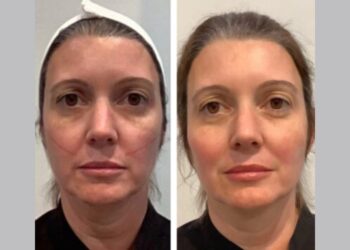Biophotonics Market analysis focusing on laser-based treatment technologies and advanced imaging methods reveals how photonics is revolutionizing healthcare diagnostics, surgical precision, and therapeutic procedures worldwide.
Introduction to Laser-Based Biophotonics
Laser technologies form the backbone of biophotonics, enabling controlled light manipulation for medical imaging and treatment. From precise tissue ablation to cellular-level imaging, lasers have become essential tools in modern medicine. Their ability to provide accurate, non-invasive, and efficient procedures reduces patient discomfort and improves clinical outcomes.
The integration of lasers with biophotonics-based imaging has led to advancements in oncology, dermatology, ophthalmology, and cardiovascular medicine. These innovations allow clinicians to visualize, diagnose, and treat diseases with greater precision, marking a significant evolution in healthcare practices.
Role of Lasers in Therapeutic Applications
Laser-based therapies are widely used in photodynamic therapy (PDT), laser surgery, and tissue regeneration. PDT, for instance, combines light-sensitive drugs with specific laser wavelengths to target and destroy cancerous cells while minimizing damage to surrounding tissues. This targeted approach enhances treatment safety and reduces side effects.
In ophthalmology, lasers are used for vision correction, cataract removal, and retinal repair. Similarly, dermatology relies on laser therapy for treating skin conditions, scar reduction, and cosmetic procedures. Cardiovascular treatments also benefit from laser angioplasty, which clears arterial blockages using high-precision laser beams.
The growing demand for minimally invasive treatments has boosted the adoption of laser-based procedures, driving substantial growth in the Biophotonics Market globally.
Advanced Imaging Methods
Advanced imaging techniques are central to biophotonics, offering real-time insights into biological structures and processes. Fluorescence microscopy, confocal imaging, and multiphoton microscopy have enhanced our understanding of cellular mechanisms and tissue morphology.
These imaging methods enable early disease detection and accurate diagnosis. For example, optical coherence tomography (OCT) provides cross-sectional imaging of tissues, while fluorescence imaging allows visualization of molecular activity within cells. When combined, these technologies create a comprehensive view of both structural and functional aspects of biological systems.
Continuous innovation in imaging components, such as sensors, detectors, and software, ensures higher resolution, faster processing, and improved diagnostic accuracy.
Integration of Lasers and Imaging Technologies
The fusion of laser systems with advanced imaging platforms represents a significant advancement in biophotonics. This integration allows simultaneous imaging and therapy—an approach known as image-guided treatment. It helps clinicians visualize targeted regions in real-time while delivering precise therapeutic energy.
For example, laser-assisted endoscopy provides enhanced visibility in gastrointestinal and respiratory diagnostics. In neurosurgery, laser imaging supports minimally invasive interventions with unparalleled accuracy. Such technologies improve surgical efficiency, reduce complications, and enhance patient recovery rates.
Market Growth Drivers
Several factors contribute to the global growth of laser-based treatment and imaging technologies. Rising prevalence of chronic diseases, increasing demand for non-invasive therapies, and ongoing technological innovation are major drivers.
Healthcare institutions are investing heavily in biophotonic devices to enhance diagnostic capabilities and treatment efficiency. Governments and private sectors are funding research focused on photothermal therapy, laser-induced fluorescence imaging, and biosensing applications. Additionally, the adoption of AI and robotics in laser-guided surgery is expanding possibilities for precision healthcare.
Challenges and Considerations
Despite its potential, the market faces challenges such as high equipment costs, stringent regulatory approvals, and the need for skilled professionals. The complexity of integrating laser systems with biological materials also demands extensive testing and calibration.
Manufacturers are addressing these concerns by developing compact, cost-effective devices and simplifying user interfaces for clinical adoption. Standardization of procedures and global regulatory harmonization are critical to ensuring safe and effective technology deployment.
Regional Insights
North America and Europe dominate the Biophotonics Market due to established research infrastructure, high adoption rates, and significant investment in medical innovation. The United States remains a hub for laser technology development, supported by collaborations between universities, hospitals, and tech firms.
Asia-Pacific is witnessing rapid growth driven by expanding healthcare infrastructure and increasing government initiatives. Countries like China, Japan, and South Korea are emerging as key players in biophotonics research, focusing on affordable, scalable laser-based solutions. Meanwhile, Latin America and the Middle East are gradually integrating these technologies into clinical and research settings.
Future Outlook
The future of the Biophotonics Market will see broader integration of laser-based technologies into routine healthcare. Advances in nanophotonics, AI-driven image analysis, and portable laser systems will further enhance accessibility and affordability. Personalized medicine, supported by precise photonic tools, will enable treatments tailored to individual patient needs.
Hybrid systems combining laser therapy and imaging are expected to dominate upcoming innovations, particularly in oncology, regenerative medicine, and neurological applications. The convergence of photonics with biotechnology and digital health will continue shaping the next generation of diagnostics and therapeutics.
Conclusion
Laser-based treatment technologies and advanced imaging methods are transforming the Biophotonics Market by improving diagnostic precision, surgical safety, and therapeutic outcomes. Continued research, investment, and collaboration will ensure these innovations become integral to global healthcare systems, supporting better patient experiences and enhanced medical efficiency.



